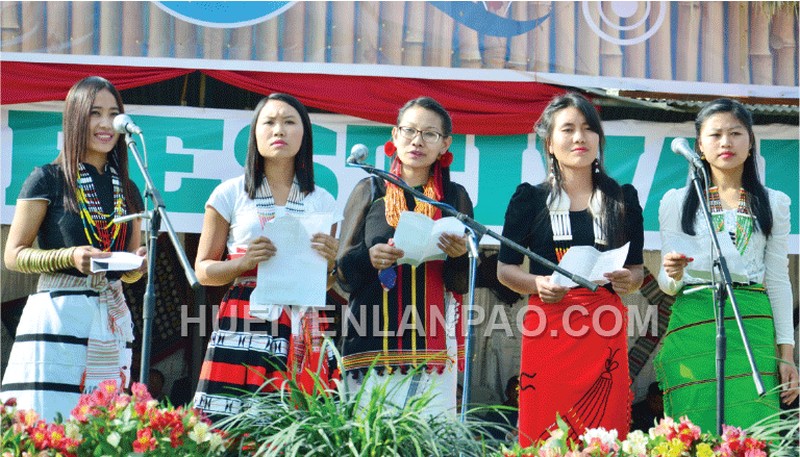Barak Festival begins; sets objective to save the River
Source: Hueiyen News Service
Imphal, December 11 2015 :
The three-day 2nd Barak Festival kick-started on Friday drawing huge crowd of enthusiastic visitors from far and near.
The festival is organised under the aegis of the Naga People's Organisation (NPO), Senapati at Senapati District Headquarter ground with an aim to preserve Barak, the biggest river in Manipur.
Speaking at the opening ceremony, NPO Information and Publicity Secretary D Lohri John stated that "Barak Festival" was first organised in 2013 with an aim to preserve the ecological settings of the river Barak.
The river is not only the biggest river in Manipur but also one of the main sources of income for all the communities living in Senapati District.
The river has provided livelihood to the people of the district and it is the indispensable duty of the people to save the Barak River, said D Lohri John.
|
During the festival, NPO will also display indigenous housing designs of Mao, Maram, Thangal, Paomei and Zelianrong to showcase their origins, indigenous cultures and traditions.
NPO President T Kamba Moses stated that it is necessary for the people to save the Barak River which is the most important river for all the people living in Senapati District and the State.
"Zeliangrong, Paomei, Thangal, Maram and Mao are like five fingers of NPO.
The five communities need to strengthen the ties and bond of love between them.
Concepts of selfness are the origin of the problems in Manipur and the communities living together need to leave behind such concepts to bring peace and development in the State", added Moses.
The function was attended by Tenyimi People's Organisation President Timikha Koza as Chief Guest, ADC Senapati Chairman ML Markson and ADC Senapati Vice Chairman T John Hingba as the presidium members.
On the first day of the festival, the traditional style of "Mei-Houba" (Meiba Chingba-Fire Making) adopted by Mao, Maram, Thangal, Paomai and Zeliangrong tribes since the time of their origin was displayed apart from various indigenous cultural items.








